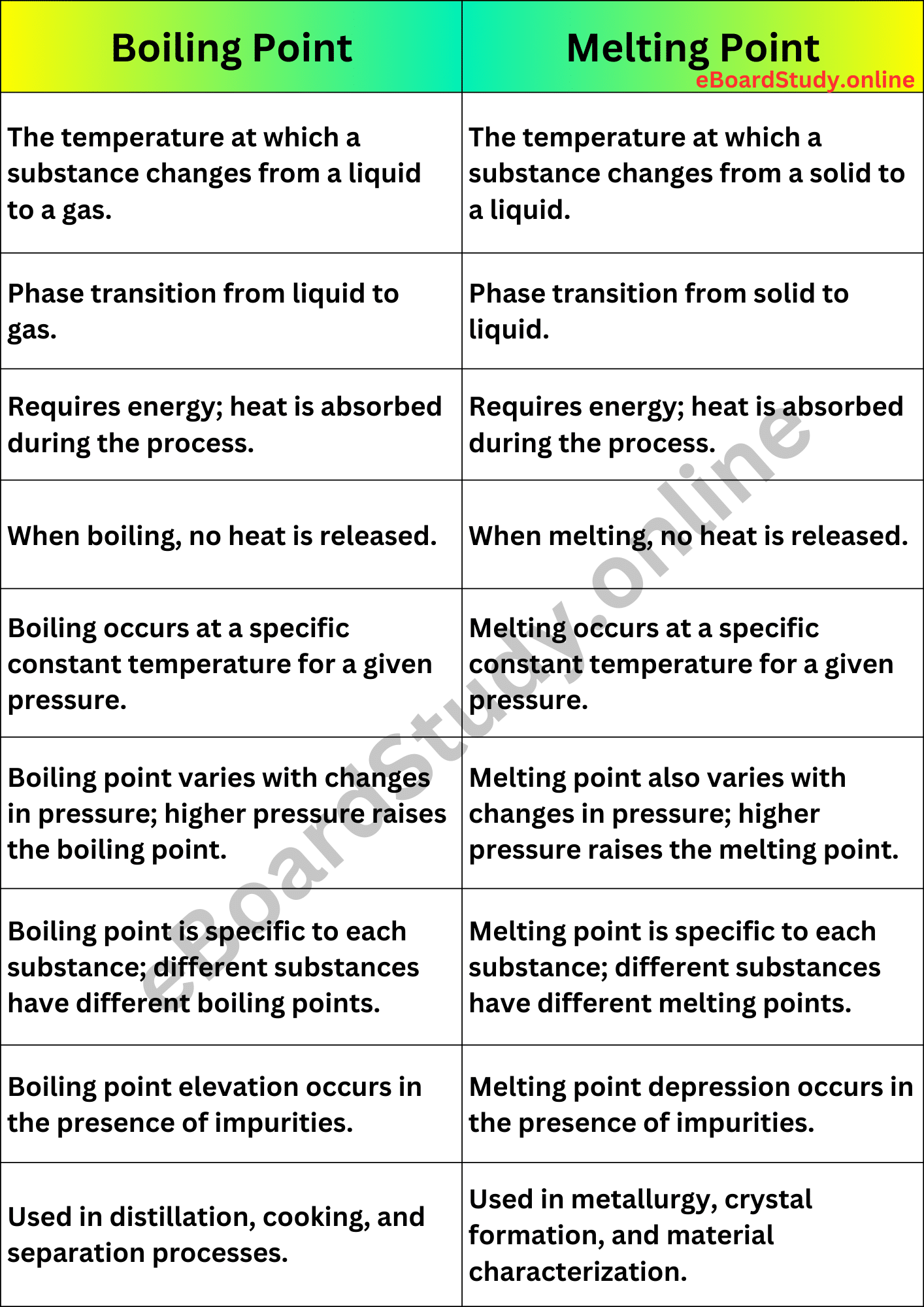Introduction
The basic concepts of physical properties is super important for students because it sets the groundwork for more advanced studies. Two fundamental properties that are boiling point and melting point. You’ve probably come across these terms in your chemistry classes. While they might seem quite similar at first, trust me, there are some key differences that you’ll want to wrap your head around to really excel in your academic journey. Our main motive is to provide you with a comparison that explains all the dissimilarities between boiling factor and melting point.
Difference between boiling point and melting point [in Table]

FAQ
Most frequent questions and answers
What are boiling and melting points, and why are they important in chemistry?
Boiling point is the temperature at which a substance modifications from a liquid to a gasoline, even as melting factor is the temperature at which it modifications from a stable to a liquid. These properties help us understand how substances behave and remodel under distinct situations, that is vital in analyzing chemistry.
Can boiling and melting points be affected by impurities in substances?
Yes, impurities can influence both boiling and melting points. For example, impurities in a solid can lower its melting point, making it melt over a broader temperature range.
How can we measure boiling and melting points in a lab?
In the lab, we use special gadget like a distillation setup to degree boiling factors and a melting point equipment to degree melting points as it should be.
Can impurities affect the boiling and melting points of substances?
Yes, impurities could have an effect. For instance, impurities in a strong can decrease its melting factor, inflicting it to soften over a broader variety of temperatures.

